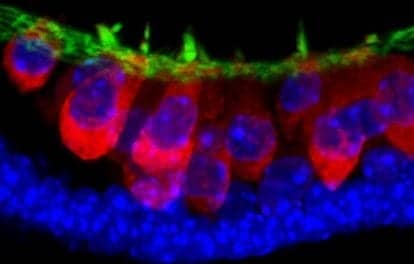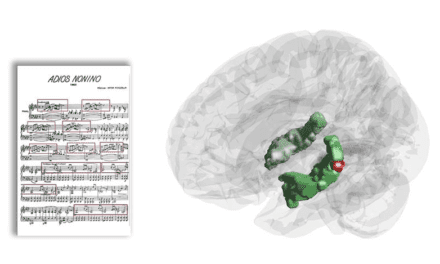Researchers at SINTEF in Norway estimate that more than 20% of people with hearing aids use their devices for less than one hour a day because of problems they encounter with tuning the settings. They report that roughly 700,000 people in Norway have some kind of hearing impairment and many want hearing aids to help them function better, yet the fine-tuning and use of hearing aids present a major challenge.
“Sadly, many devices end up neglected in drawers,” said senior research scientist Geir K. Hanssen of SINTEF in a recent announcement from the organization. “It’s also too difficult for some users to explain their hearing problems to others in words alone.” Hanssen said that clinics in Norway often lack the audiometry equipment and technology required to assist their patients in tuning their hearing aids to suit their individual needs.
Thanks to a recent research project at SINTEF, now hearing aid users can participate in fine-tuning their devices themselves with a tune-it-yourself tool that is being developed. In 2013, IT researchers at SINTEF applied to the Research Council of Norway to get funding for a development project called ABRUMED in which hearing aid users would be able to actively participate in fine-tuning the settings on their own devices.
The researchers received funding from the Council’s VERDIKT program, and AudioPlus Concept AS and the Norwegian Association for the Hard of Hearing (HLF) joined in as SINTEF’s partners during the project’s development phase, which continues until 2016. SINTEF and Sør-Trøndelag University College (HiST) are the project’s R&D partners.
To develop a system that allows hearing aid users to tune their own devices, audiometry specialists working on the ABRUMED project at the acoustics laboratory at SINTEF set up a table with a touch screen monitor that can display sound images. The hearing aid user works with the audiometry researchers and a sound simulator to construct the images. The sound images represent situations that a user might encounter day to day. Realistic soundtracks are created to replicate these daily environments, such as a workplace cafeteria with a lot of noise and echoes, or driving a car with associated traffic noise.
SINTEF reports that the ABRUMED system consists of three tools: 1) a sound simulator that reproduces sounds, 2) a guided, user-controlled fine-tuning feature, and 3) a speech audiometry feature which tests the user’s ability to understand speech in the presence of background noise.
“All the sounds are real and the system plays them back in such a way that they can be transmitted from any desired direction,” said Hanssen. “The user then explains to the audiometrist exactly what problem he or she is experiencing, and has access to buttons which allow him or her to remotely control the sound and fine-tune the settings. For example, the user may touch on an image of a cafeteria. He or she will then be exposed to sounds that we typically associate with cafeterias, and will have the opportunity to add to or increase the complexity of the sound by touching other images, such as a piece of cutlery. Each setting determined by the user is transferred immediately to the hearing aid so that he or she can hear the effect it produces.”
According to SINTEF, AudioPlus Concept AS owns the sound image and simulator system in its present form, and intends to commercialize it. AudioPlus plans to set up the new system at one or two of its clinics in the next couple of months. A mobile app has also been developed which allows the user to record problematic sounds both at home or at work. These are then transferred automatically via the Internet so that they can be played back in the sound simulator the next time the user returns to a clinic.
Source: SINTEF, Gemini
Photo credit: Thor Nielsen/SINTEF






